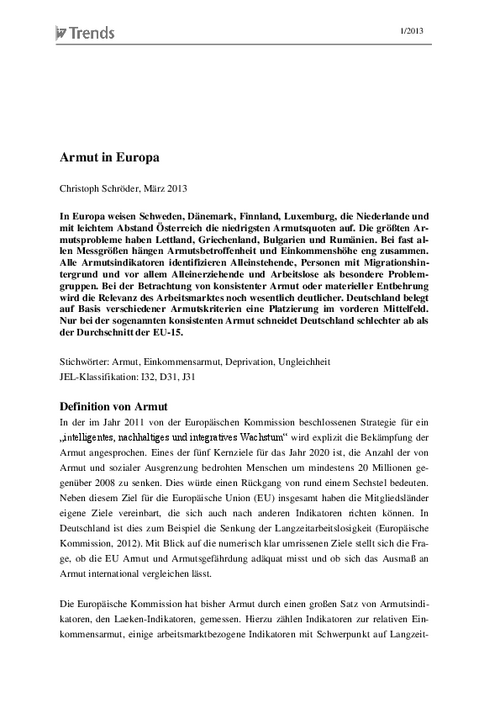Sweden, Denmark, Finland, Luxembourg, the Netherlands and, trailing slightly, Austria can boast the lowest poverty rates in Europe, while poverty presents Latvia, Greece, Bul-garia and Romania with the greatest problems. By almost every measure, poverty correlates closely with income level. All poverty indicators identify single persons, those with a migration background and above all single parents and the unemployed as particular problem groups. An analysis of consistent poverty or material deprivation makes the significance of the labour market even clearer. A variety of poverty criteria put Germany securely above the median. Only in the case of what is termed consistent poverty does Germany score worse than the EU-15 average.

Poverty in Europe
IW-Trends


Christoph Schröder: Armut in Europa
IW-Trends

More on the topic
![[Translate to English:] Das Gebäude des Weißen Hauses in Washington, D.C. in den Vereinigten Staaten von Amerika. [Translate to English:] Das Gebäude des Weißen Hauses in Washington, D.C. in den Vereinigten Staaten von Amerika.](/fileadmin/_processed_/c/1/csm_GettyImages-2161499385_White_House_Editorial_884306add8.jpg)
Trump or Harris or ...? What Europe must prepare for
A few months before the presidential election in the USA, Donald Trump has a good chance of being re-elected. On the Democratic side, the incumbent president has withdrawn his candidacy after a long period of hesitation, while Vice President Kamala Harris is ...
IW
Compendium 5.5: CO2 Regulation of Road Transport in Europe
With the Compendium CO2 Regulation in Europe, the IW has been providing the interested public with a comprehensive collection of data on the development of CO2 emissions from passenger car traffic in the European Union, as well as on the applicable regulatory ...
IW